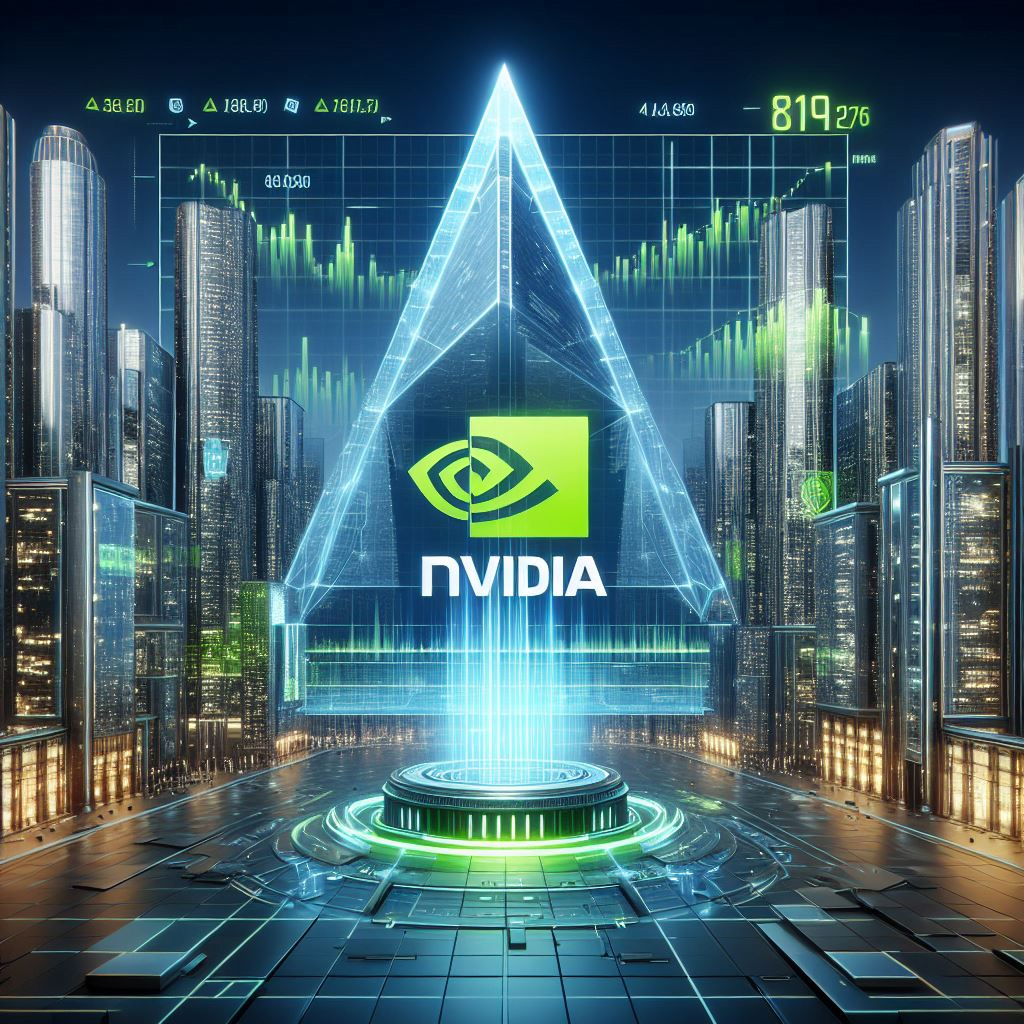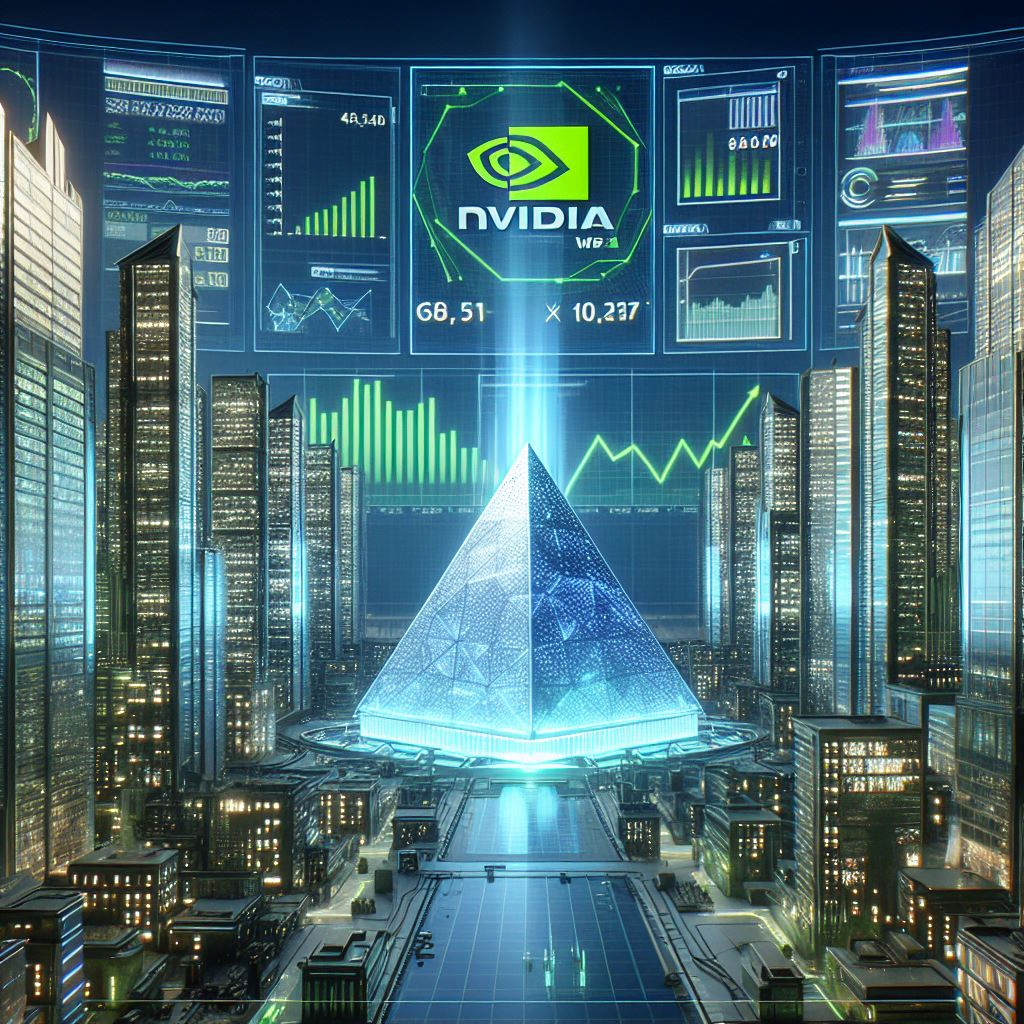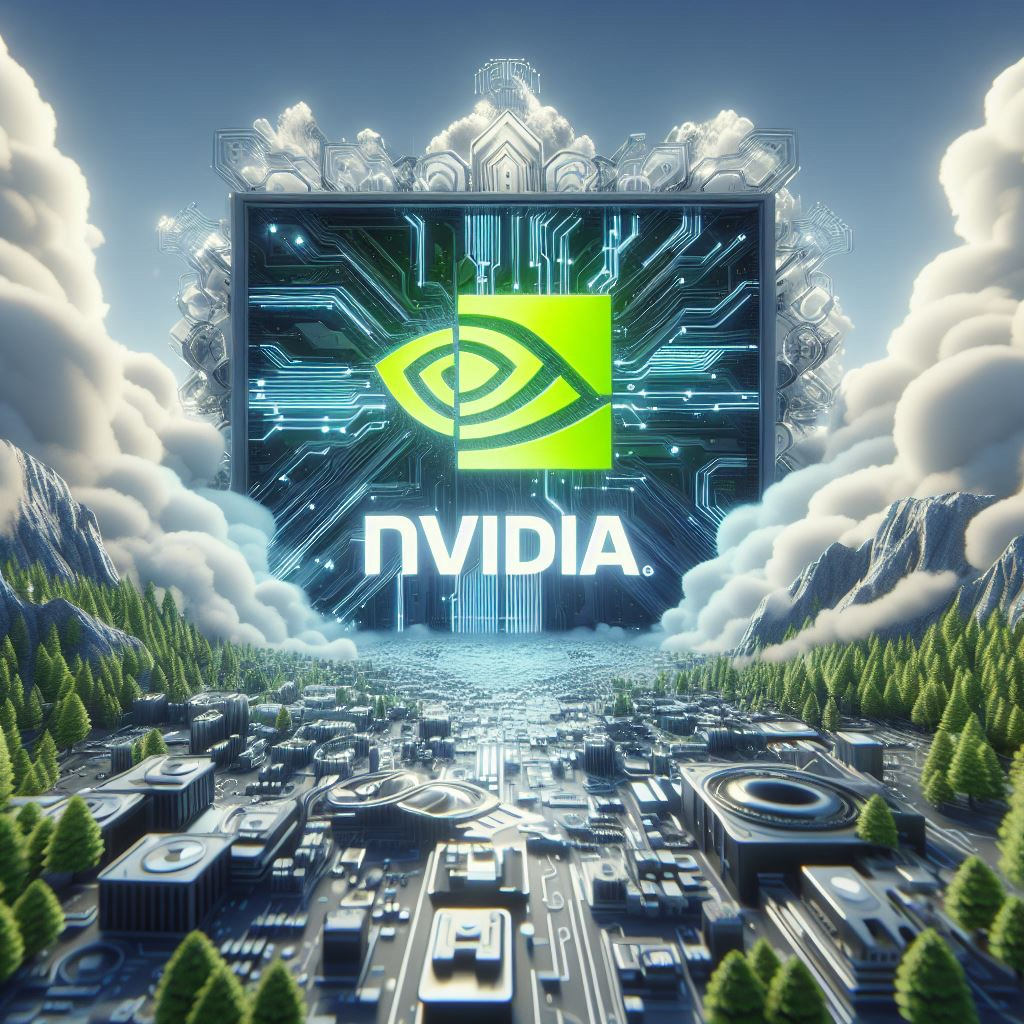Introduction
In a remarkable turn of events, NVIDIA, the tech giant renowned for its gaming and graphics GPUs, has achieved a historic milestone: a $2 trillion market valuation. This achievement places NVIDIA in an elite club alongside tech behemoths like Apple and Microsoft. But what exactly fueled this meteoric rise? Let’s delve into the fascinating journey of NVIDIA and explore how it became the driving force behind the generative artificial intelligence (AI) revolution.
The AI Frenzy and NVIDIA’s Role
NVIDIA’s ascent to the $2 trillion mark can be attributed to the insatiable demand for its chips. These chips serve as the backbone for AI applications across various domains, from autonomous vehicles to natural language processing. As the pioneer of the generative AI boom, NVIDIA’s technology powers almost all major players in the AI landscape, including OpenAI and Google.
From $1 Trillion to $2 Trillion: A Whirlwind Journey
In a mere eight months, NVIDIA’s market value skyrocketed from $1 trillion to $2 trillion—a feat unmatched by any other U.S. company. Analysts draw parallels to the gold rush era, where picks and shovels providers reaped immense profits. Similarly, NVIDIA’s chips are the essential tools driving AI innovation, making it the go-to choice for AI developers worldwide.
The AI Gold Rush: A Global Phenomenon
NVIDIA’s rapid growth has captured global attention. European fund managers, investors, and analysts closely monitor its performance. The company’s 2024 share surge significantly contributed to the S&P 500’s overall rise, emphasizing its pivotal role in shaping the stock market.
Beyond the Valuation: NVIDIA’s Impact
While the $2 trillion valuation is impressive, NVIDIA’s influence extends far beyond numbers. Its chips empower AI training and inference, making it indispensable for leading cloud computing companies. As demand for AI continues to surge, NVIDIA’s capacity to meet this demand becomes crucial.
The Road Ahead
As NVIDIA continues its upward trajectory, the world watches in awe. The company’s commitment to innovation, coupled with its strategic positioning in the AI landscape, ensures that it remains at the forefront of technological advancement. Whether it’s self-driving cars, medical research, or gaming, NVIDIA’s chips are the driving force behind the AI revolution.

NVIDIA’s $2 Trillion Valuation: Riding the AI Wave (Part 2)
The AI Revolution: NVIDIA’s Catalyst
In the ever-evolving landscape of technology, NVIDIA stands as a beacon of innovation. Its journey from a graphics card manufacturer to a global AI powerhouse is nothing short of remarkable. Let’s delve deeper into the factors that propelled NVIDIA to its historic $2 trillion valuation.
1. The AI Renaissance
The resurgence of artificial intelligence (AI) has reshaped industries, economies, and societies. NVIDIA recognized this seismic shift early on and positioned itself as a key enabler. Its Graphics Processing Units (GPUs), originally designed for gaming, found a new purpose in AI training and inference. These chips, with their parallel processing capabilities, became the workhorses for neural networks, deep learning, and machine learning algorithms.
2. The Generative AI Boom
Generative AI, which involves creating new content—be it images, music, or text—has become a driving force. NVIDIA’s GPUs power the training of massive language models like GPT-3, enabling natural language understanding and generation. The ability to generate realistic images, videos, and even entire virtual worlds has opened up exciting possibilities across domains.
3. Partnerships and Collaborations
NVIDIA’s strategic collaborations have been instrumental. Its partnership with OpenAI, the research organization co-founded by Elon Musk and Sam Altman, accelerated AI breakthroughs. The development of GPT-3, the largest language model to date, showcased the synergy between NVIDIA’s hardware and OpenAI’s algorithms.
4. Autonomous Vehicles and Robotics
NVIDIA’s chips are the neural cortex of self-driving cars. Their real-time processing capabilities enable perception, decision-making, and control. Companies like Tesla, Waymo, and Uber rely on NVIDIA’s technology to navigate complex environments. Beyond cars, robots, drones, and industrial automation systems benefit from NVIDIA’s prowess.
5. Healthcare and Drug Discovery
In the fight against diseases, NVIDIA’s GPUs accelerate drug discovery. Simulating protein folding, analyzing genomics data, and predicting molecular interactions—all require immense computational power. NVIDIA’s CUDA platform and libraries empower researchers worldwide, making drug development faster and more efficient.
6. Gaming and Beyond
While gaming remains NVIDIA’s foundation, its impact extends far beyond. The gaming community benefits from ray tracing, AI-enhanced graphics, and immersive experiences. But NVIDIA’s chips also fuel scientific simulations, weather forecasting, and financial modeling. The convergence of gaming and AI has been a game-changer.
7. Ethical AI and Sustainability
NVIDIA actively promotes ethical AI practices. It emphasizes fairness, transparency, and accountability. Additionally, its GPUs are used for climate modeling, energy optimization, and reducing carbon footprints. NVIDIA’s commitment to sustainability aligns with its technological advancements.
8. The Road Ahead
As NVIDIA continues its ascent, challenges await. Competition from AMD, Intel, and emerging players keeps the company on its toes. Balancing growth with responsible AI deployment remains critical. NVIDIA’s leadership in edge computing, quantum computing, and data centers will shape the next decade.
NVIDIA’s $2 Trillion Valuation: Riding the AI Wave (Part 3)

The Ethical Dilemmas of AI Dominance
As NVIDIA’s market capitalization soars, it’s essential to address the ethical implications of its AI dominance. Here are some critical considerations:
1. Bias and Fairness
AI models trained on large datasets can inadvertently perpetuate biases. NVIDIA must actively work toward fairness, transparency, and accountability. Ensuring that AI systems don’t discriminate based on race, gender, or socioeconomic status is crucial.
2. Job Displacement
While AI creates new opportunities, it also displaces certain jobs. NVIDIA’s role in shaping the future of work is immense. It must collaborate with governments, industries, and educational institutions to prepare the workforce for an AI-driven economy.
3. Privacy and Surveillance
As AI becomes ubiquitous, privacy concerns escalate. NVIDIA’s chips power surveillance systems, facial recognition, and data analytics. Striking a balance between security and privacy is a delicate task—one that NVIDIA must navigate thoughtfully.
4. Environmental Impact
The energy-intensive nature of AI training raises environmental questions. NVIDIA’s commitment to sustainability should extend beyond its products. Investing in green technologies and minimizing carbon footprints is imperative.
5. Regulation and Governance
Governments worldwide grapple with AI regulation. NVIDIA’s influence necessitates active participation in shaping policies. Balancing innovation with responsible governance ensures long-term success.
The Cultural Shift: Creativity and AI
Beyond financial metrics, NVIDIA’s impact on creativity is profound. Here’s how:
1. Artistic Expression
Generative AI allows artists to create novel content. From music composition to visual art, NVIDIA’s tools empower creativity. The fusion of human imagination and AI algorithms results in breathtaking works.
2. Writing and Storytelling
Language models like GPT-3, powered by NVIDIA, generate coherent narratives. Authors, journalists, and content creators collaborate with AI to enhance storytelling. The boundaries between human and machine creativity blur.
3. Music and Composition
NVIDIA’s AI can compose original music. From classical symphonies to experimental tunes, AI-generated melodies challenge traditional notions of creativity. Musicians collaborate with algorithms, creating harmonious fusion.
4. Design and Architecture
Architects and designers leverage AI for innovative structures. NVIDIA’s GPUs simulate complex designs, optimize energy usage, and visualize spaces. The marriage of aesthetics and computation shapes our built environment.
5. Gaming and Virtual Worlds
NVIDIA’s legacy in gaming extends to virtual reality (VR) and augmented reality (AR). Immersive experiences redefine storytelling. Gamers become creators, shaping digital realms with AI-driven tools.
The Human-AI Symbiosis
NVIDIA’s valuation isn’t just about dollars—it’s about the convergence of human ingenuity and machine intelligence. As we celebrate this milestone, let’s recognize that AI amplifies our capabilities. The future lies in collaboration, where humans and AI coexist, pushing boundaries and redefining what’s possible.
Conclusion: A New Era
NVIDIA’s $2 trillion valuation isn’t just about financial milestones; it symbolizes a new era. The fusion of AI, creativity, and computational power defines our future. As we celebrate NVIDIA’s achievement, we recognize that its journey is intertwined with humanity’s quest for knowledge, progress, and transformation.
